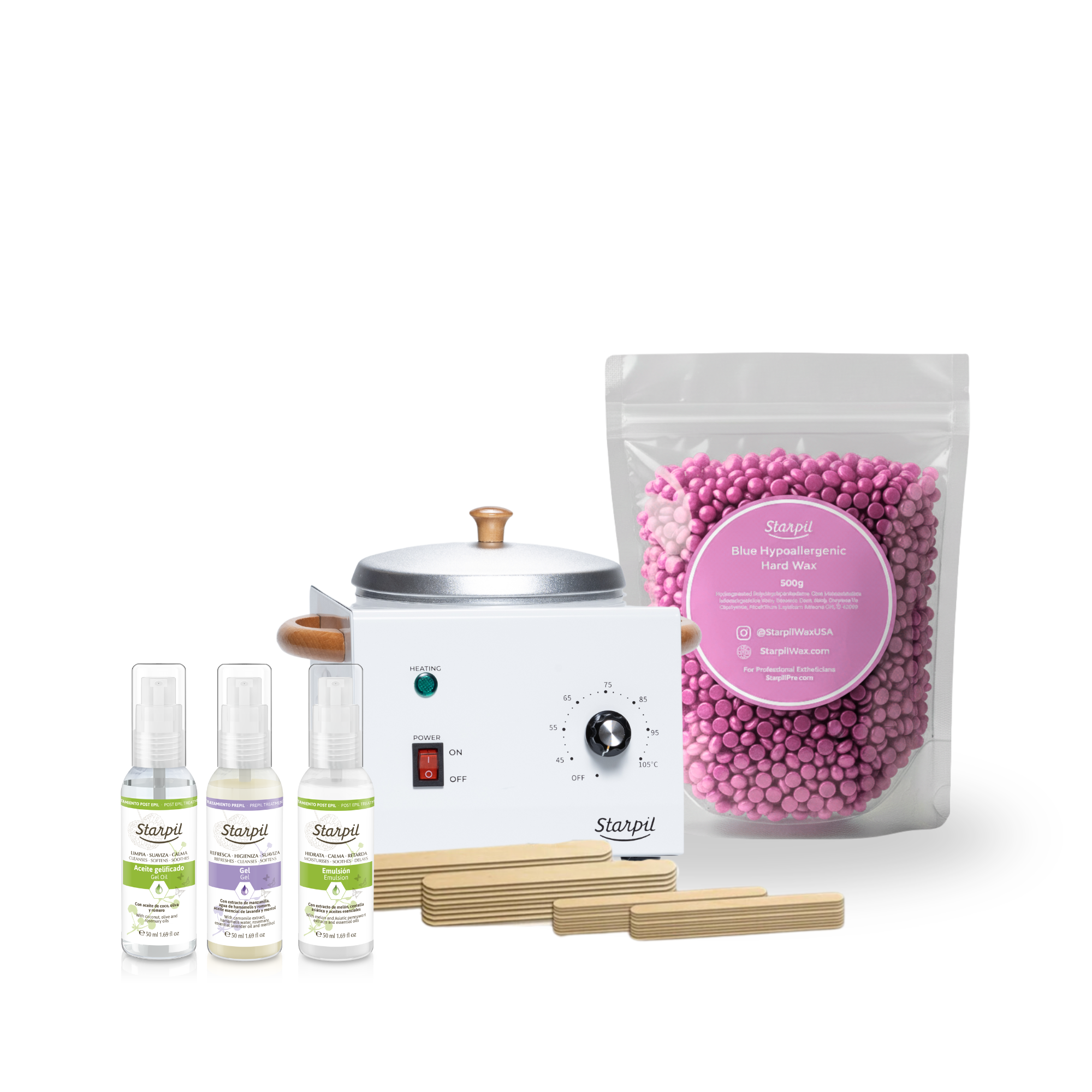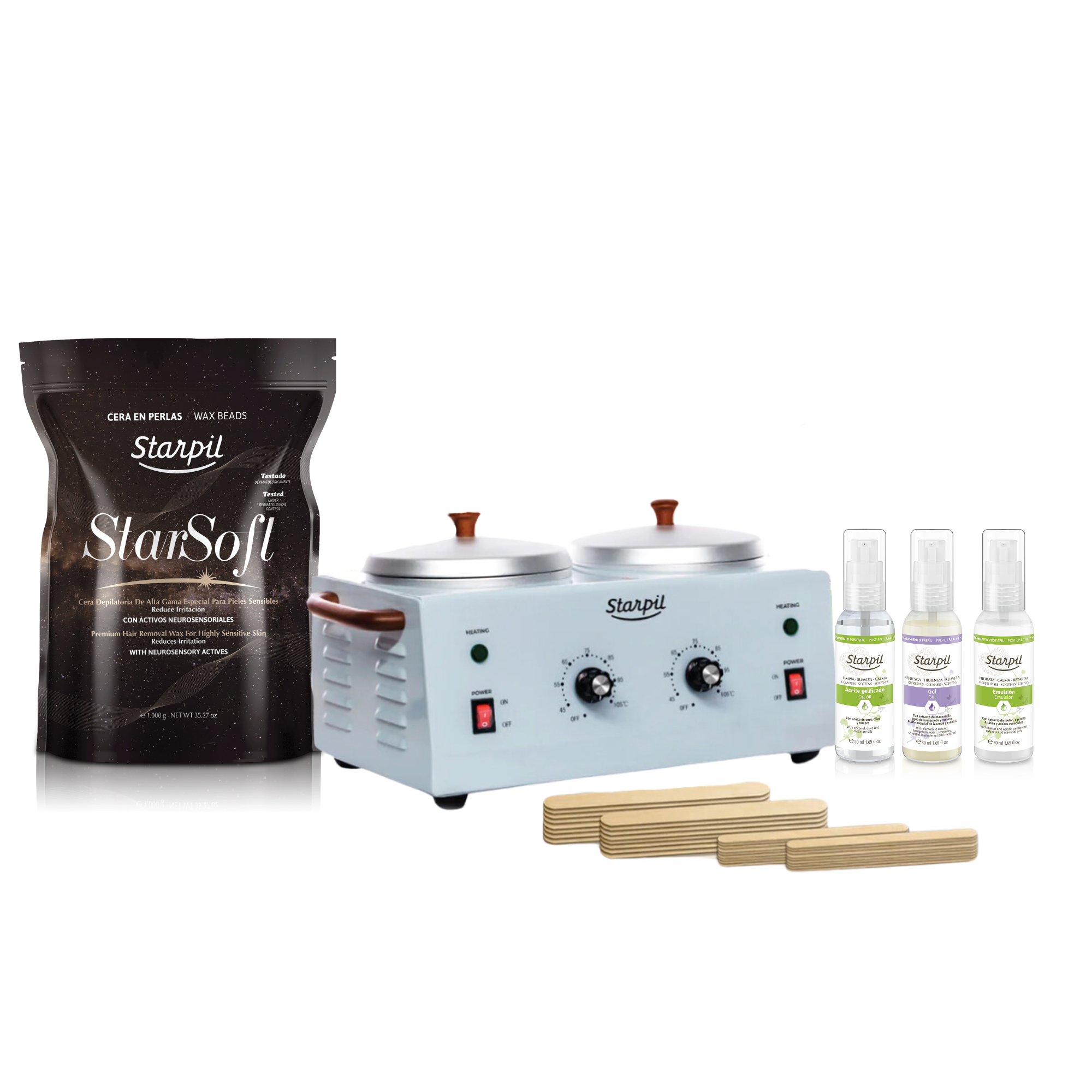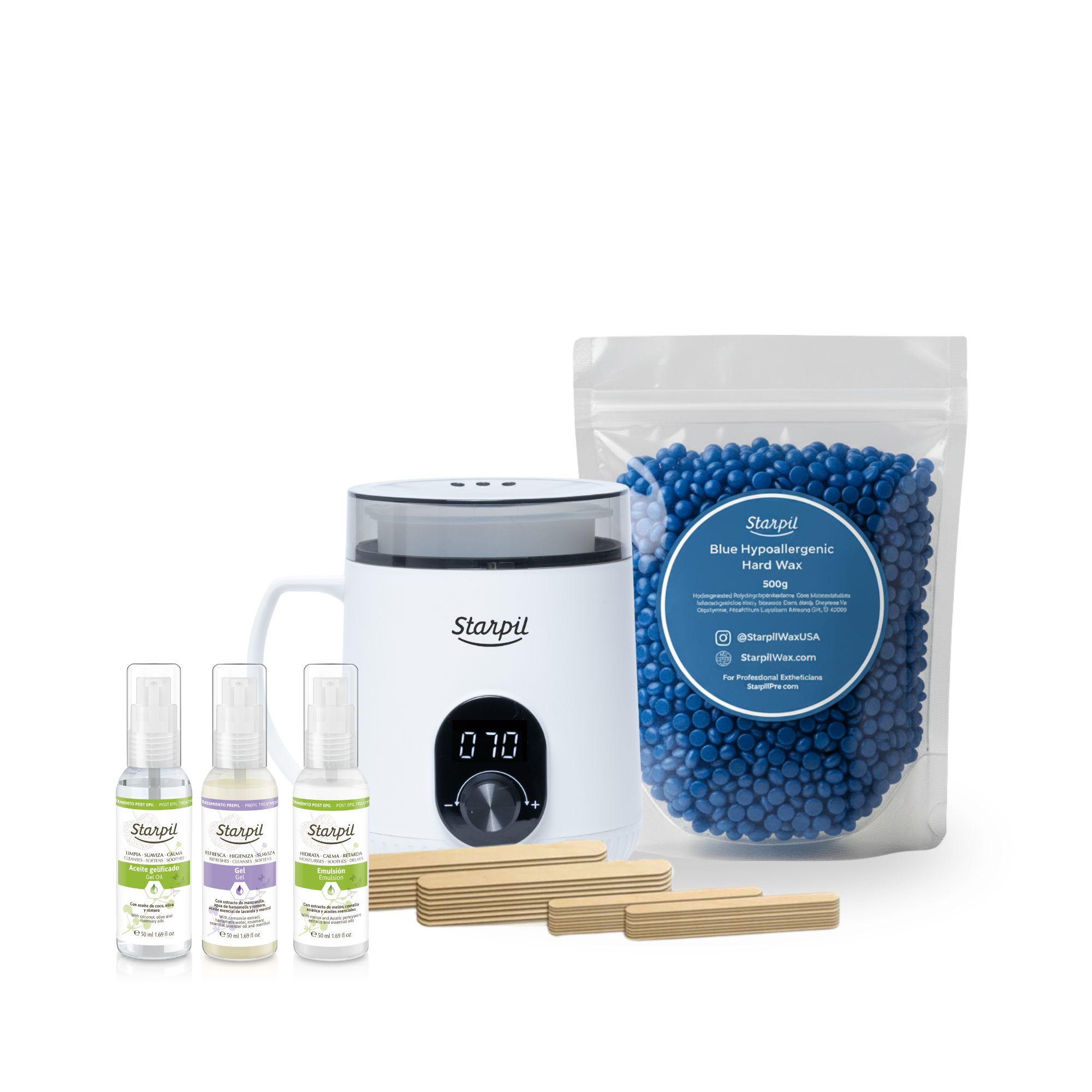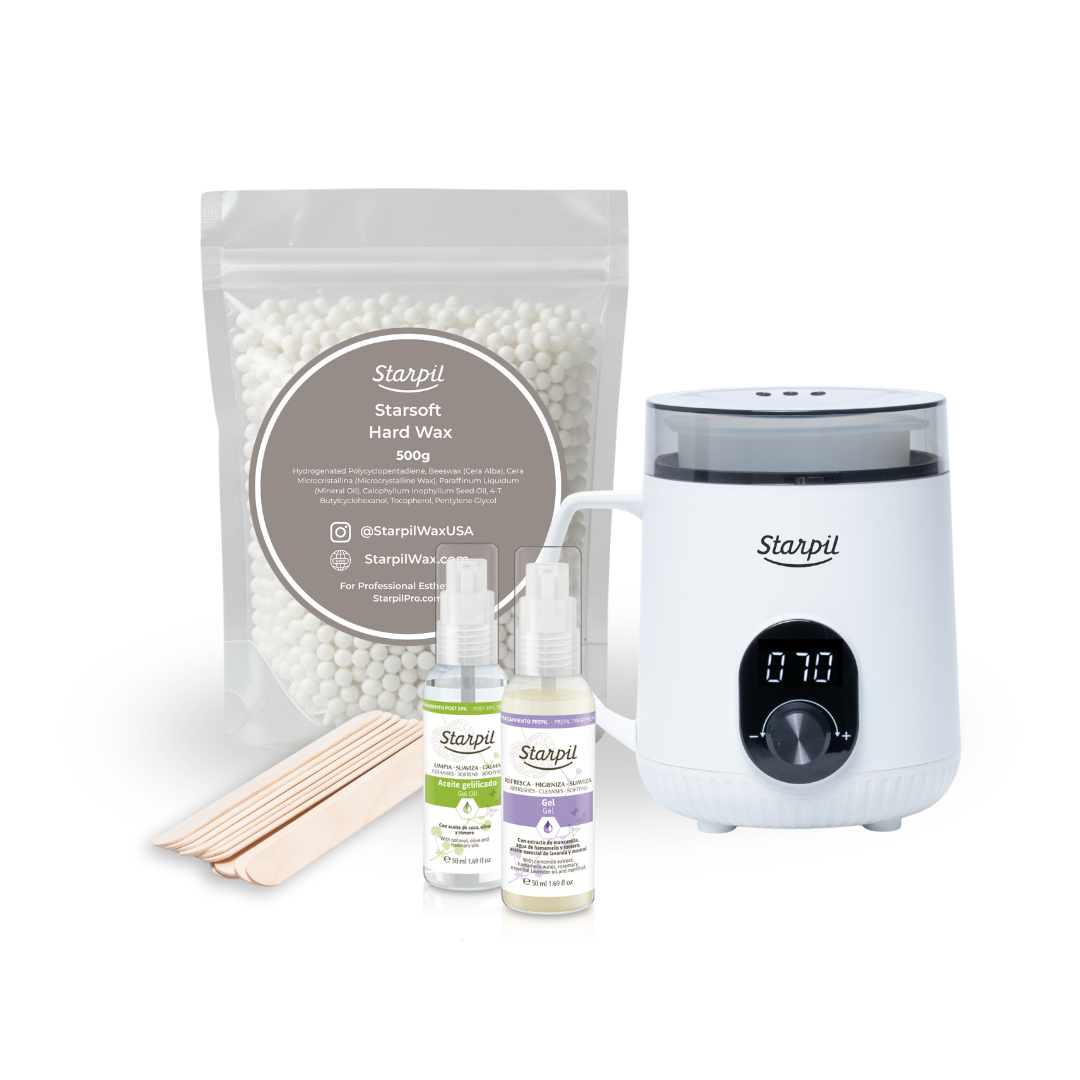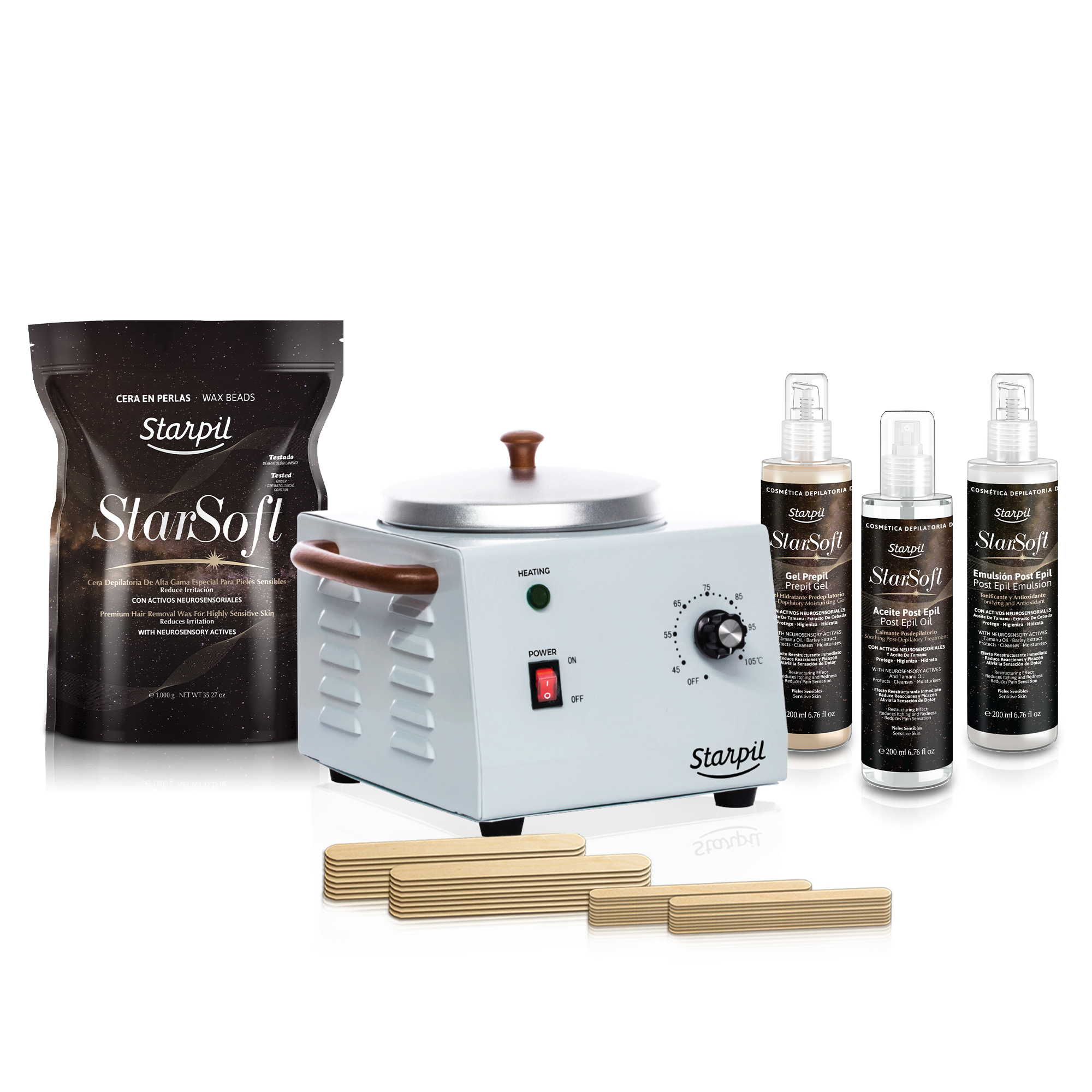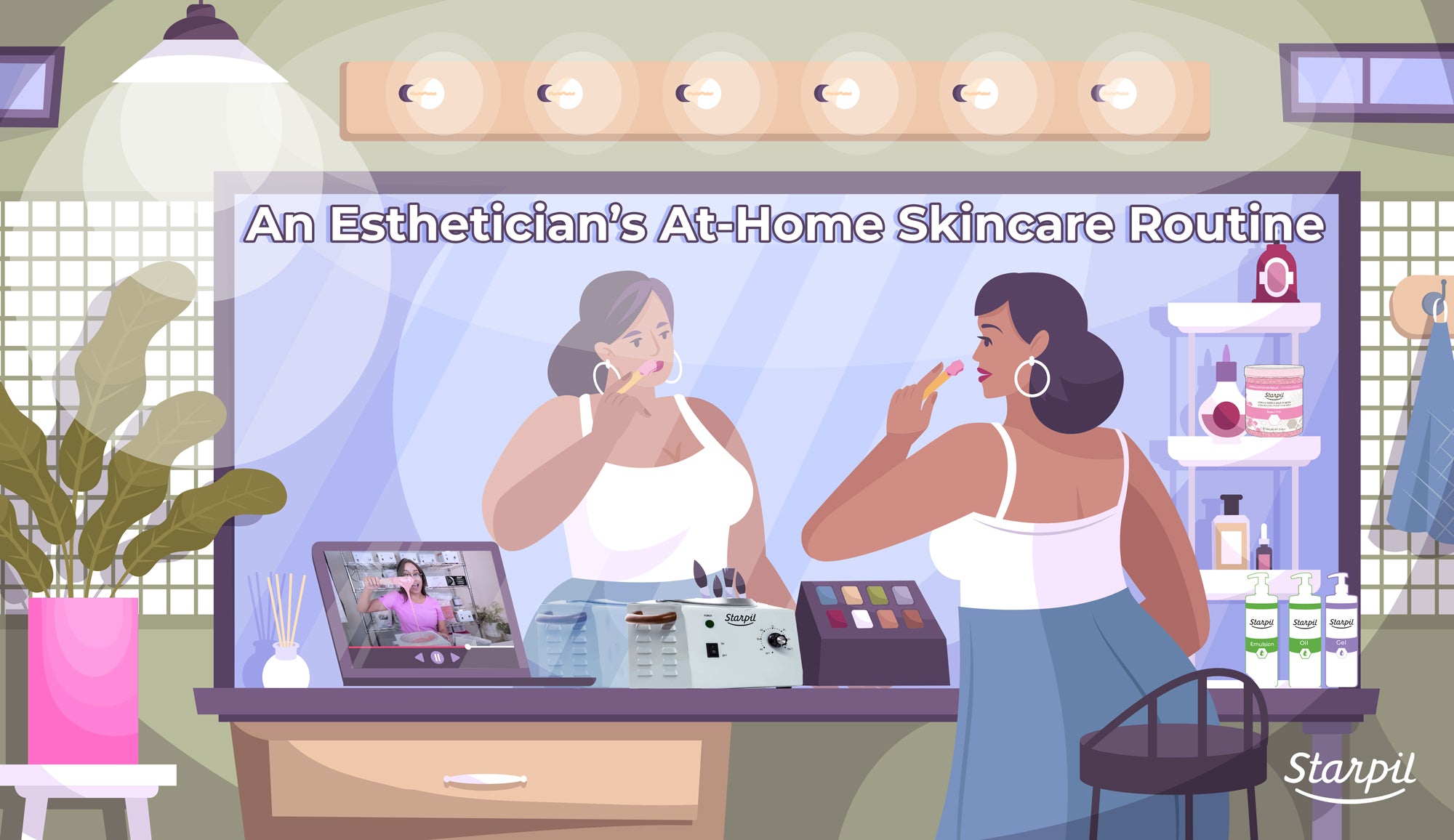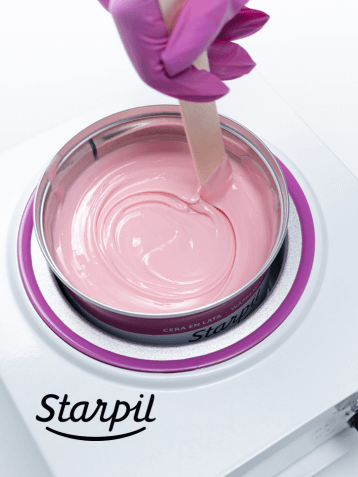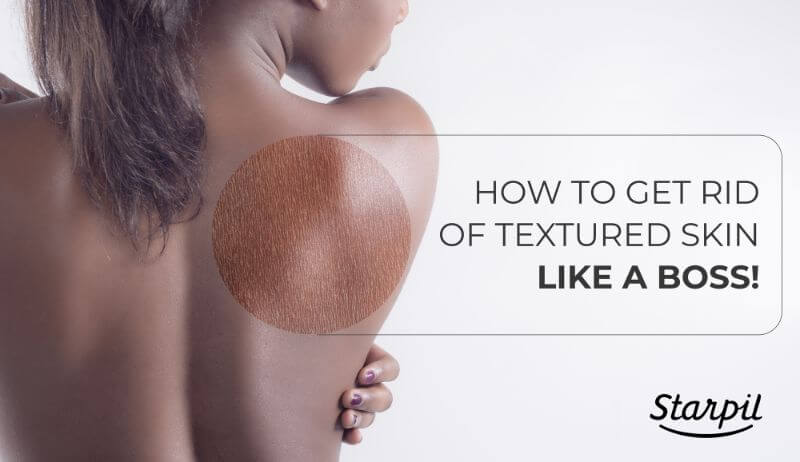How to Get Smooth Skin: Top Dermatologist Recommendations

Experiencing textured skin or blemishes can be something that happens to anyone, but if it's a consistent issue, it’s understandable that you might be looking for solutions.
Though it may seem easy to get smooth skin by just switching up your skincare routine or exfoliating every few days, actually clearing up your skin can turn into a whole lifestyle change.
Don’t get us wrong; if you’re trying to figure out how to get smooth skin, exfoliation and having the right skincare routine is definitely an important step in getting your skin in check. However, the answers don’t just lie in skincare products - they also involve your diet, stress and work management, and hair removal methods among other things.
Table of Contents
How Can I Improve My Skin Texture?
How to Take Care of Sensitive Skin
How to Improve Your Skincare Routine
How to Get Smooth Skin on the Body
How to Get Smooth Skin on the Face
How to Get Smooth Skin After Waxing
Learning how to get smooth skin means making small decisions all day every day that keep skin clean, hydrated and nourished, and protected (the four major skin needs). These small decisions can bring huge results!
In this article, we’ll dive deep into some of the top questions and concerns people have about not only how to make your face smoother, but also how to get smooth skin on your body.
How Can I Improve My Skin Texture?
Skin’s appearance and behavior is often a reflection of how it’s cared for through diet, stress levels, genetics, skincare routine, and hair removal habits.
Skin’s four major needs are to stay clean, hydrated, nourished, and protected. Essentially, having a smooth skin texture is dependent on all-around care from the inside out. Proper cleansing, exfoliating, and skincare in conjunction with a healthy lifestyle are key to improving skin texture.
Thankfully, skin already has its own systems to clean, hydrate, nourish and protect itself. It has a protective layer called the acid mantle that works with the support of your gut health as a part of your microbiome (the trillions of good bacteria that keep skin healthy and protected).
When we eat poorly, have a lot of stress, or use the wrong products or hair removal methods for our particular skin needs, we can break down the acid mantle from the inside out, and leave skin susceptible to flaking, dehydration, breakouts, or worse.
READ: An Esthetician’s At-Home Skincare Routine
How Diet Affects Your Skin
Though we may not want to admit it, diet is key when mastering how to have smooth skin. From food intolerances to allergies, sensitivities, or eating foods high in fat, grease, oils, and more, your skin can be easily influenced and impacted by what goes into your body.
Which Foods Cause Breakouts?
Eating excessive amounts of sugar, white flour, or fried and processed foods with minimal intake of fresh fruits and vegetables can cause hormonal issues, excess oil, breakouts, and dehydration.
Not only that, but when the skin is fighting off toxins from these foods, it’s spending less time keeping skin clean, hydrated and nourished, and protected.
How Gut Health Affects Skin
What you eat also impacts your gut health, which in turn impacts your skin health. How does this work? Well, by consuming high amounts of the foods we mentioned above, you can not only throw off your hormones but also throw off the balance of bacteria in your gut.
This can lead to inflammation of the gut, and can even affect how your body absorbs nutrients. In turn, this can result in breakouts, skin irritation, or even cause skin conditions like eczema.
How Food Sensitivities Affect Skin
In addition to paying attention to which foods cause breakouts or impact your gut health, you should also look out for which foods give you certain adverse reactions. For example, some people experience breakouts or other skin reactions from consuming particularly acidic foods like tomatoes, strawberries, oranges, or foods high in citric acid.
Food sensitivities, intolerances, or allergies can also affect your overall skin look and feel. In addition to foods rich in citric acid, lactose intolerance and dairy consumption have also been linked to acne breakouts.
If you’re unhappy with the state of your skin and suspect the root might be an allergen or food intolerance, talk to your doctor, or begin to curb your consumption of these foods.
READ: How to Get Rid of Oily Skin
How to Take Care of Sensitive Skin
Knowing how to get smooth skin means understanding your skin’s needs. The most common skin types and concerns can include dry, mature, sensitive, oily, and acne-prone.
Everything from our diet and skincare to the environment we live in can be a factor in why skin may be behaving a certain way. Because of this, it’s safe to say that no matter what your skin concerns are, keeping it clean, hydrated, nourished, and protected should be on everyone’s to-do list when wanting to know how to have smooth skin.
When skin cannot retain water, or produce sebum, it can become fragile and brittle and be vulnerable to splits, fissures, inflammation, and flaking.
Dry, flaky skin cells can block pores and follicles, leaving them susceptible to bacteria growth, bumps, and acne. The hair on dry skin is prone to breakage, ingrown hairs, and bumps.
To add insult to injury, dehydrated skin may feel the need to compensate for a lack of moisture by producing excess oil, which can lead to breakouts. If you’re looking for solutions as to how to get smooth and hydrated skin, you’ll want to invest in gentle cleansers that do not further damage the acid mantle.
Ingredients to look for when researching cleansers include lactic acid, hyaluronic acid, ceramides, and natural oils like jojoba and avocado.
These skin types also need GENTLE exfoliation methods and plenty of moisturizers to lock water content in.
READ: 5 Tips for How to Wax Sensitive Skin
How Genetic Predispositions Affect Skin
When discussing the different factors that cause the skin to not look its best, take into account any genetic factors or predispositions you might have that can be linked to breakouts or sensitive skin.
Genetics are the core reason why you have the skin type you do in the first place, whether it’s oily, dry, combination, sensitive, or normal. Many skin conditions are also genetic or can put you at increased risk for developing conditions like acne (at any age), eczema, psoriasis, and rosacea.
Genetics also play a role in how you manage your gut health, stress levels, and even diet. You might have certain allergies or food sensitivities that play a role in your approach to both skincare and in taking care of your gut, not to mention reactions to skincare products or treatment options.
Additionally, if you have any conditions like depression or anxiety, you’ll have to take a different approach to manage your stress than somebody without.
Wondering if your skin problems have genetic links? Talk to your doctor or dermatologist (or allergist!) to see how your skincare might be impacted by your unique genetic makeup.
READ: Dermatologist vs. Esthetician: Who’s Better for My Skin Care?
How to Improve Your Skincare Routine
It might seem like the words clean, hydrated, nourished, and protected have been mentioned a lot, but everything you do should consider these factors when wanting smooth skin. Here are some tips on how to meet the four major skin needs through a daily skincare routine.
Keep Skin Clean
Cleansers, exfoliators, and detox masks are all things needed to get clean skin, but even your cleansers have to address the major skin needs to keep the acid mantle intact so that it can do its job.
Only use products with acne treatments in them when acne is present and do your due diligence to keep it hydrated after.
If you’re looking for products to keep your skin free of congestion and to dissuade acne breakouts, incorporate the Acne and Oil Balancing Kit into your routine to properly cleanse, exfoliate, hydrate and moisturize skin.
Keep Skin Hydrated and Nourished
All skin types need to be moisturized and nourished after cleansing. When the skin dries, the water molecules evaporate on the skin. You need to lock in that moisture.
One of the best ways to do this is to start with a Face Tonic with Rose Water before beginning your post-cleanse care. Watch out for witch hazel - it may reduce redness and help some people’s skin, but can actually increase redness and inflammation in others.
On the body, leave skin damp before applying lotion.
Only use moisturizers according to your skin type and ones filled with healthy ingredients that nourish. If skin still feels dry after application, you may want to add a hydrating serum before moisturizer or a heavier night cream.
How to Protect Skin
All of the previous steps work to keep your skin protected from dehydration and inflammation but you still have to defend against excessive sun exposure and the elements. Using sun protection should be a daily practice whether it comes in a lotion, sunglasses, a hat, or long sleeves.
How to Clear Skin by Managing Stress
Keeping your skin clear and smooth means keeping your hormones in balance, which means managing your stress in a big way. When we stress, we release cortisol, which gives a green light to the oil glands to produce more oil, which can cause breakouts.
Stress also causes inflammation. When these factors are combined, this can negatively impact your skin as well.
Oil and inflammation are two of the main causes of acne. Stress can also aggravate other skin conditions like psoriasis, rosacea, and eczema. When you begin to manage stress (whether through sleep, exercise, time management, or another strategy) you’ll notice your skin will soon show improvement.
How Do I Get Smooth Skin Naturally?
Looking for a complete routine to get smooth skin? We’ve got you covered.
Step 1: Dry brushing from the bottom of the feet up to the neck with strokes that move toward the heart to flush lymph, increase blood circulation, move oxygen, and detox the skin. It also exfoliates at the same time.
Step 2: Apply sesame seed oil 15 minutes before showering or bathing to draw out toxins from the skin and soften it. When you get into the shower or bath, massage the oil into the skin as it starts to rinse off.
Step 3: Soak in a tub of Epsom salt and a few drops of your favorite essential oil for 20 minutes. Alternatively, if you don’t have a tub, shower and save exfoliation for the end when the skin has been softened.
Step 4: Use an all-natural salt or sugar scrub or loofah to mirror your dry brushing process in Step 1.
Step 5: Follow exfoliation with a hydrating, nourishing, and protecting skincare routine of serums, moisturizers, and body creams or oils over wet skin to lock-in moisture.
READ: How to Get Rid of Textured Skin: The Ultimate Guide
How to Get Smooth Skin on the Body
When new skin cells develop, the older ones get pushed to the surface. Many cells flake off into the atmosphere but many mix with sweat, dirt, and sebum to create a dull, ruddy finish.

Exfoliating weekly can stop the skin from getting clogged pores, dullness, or flaky skin. There are many ways to exfoliate, and many of these methods should be practiced regularly, especially before hair removal.
How to Get Smooth Body Skin at Home
Whichever hair removal method you use, taking care of the skin’s needs are your first priority. If you don’t follow the proper guidelines or are a pro that doesn’t educate their clients on proper precautions to take before and after waxing, for example, skin can be left out in the cold.
READ: Full Body Waxing 101
How to Get Smooth Skin on the Face
Facial skin can be more sensitive to textural issues because it’s usually thinner than the rest of the body. If you’ve met all of your skin’s requirements, using chemical exfoliators or gentle scrubs is a great way to smooth the skin.

Clients with sensitive skin shouldn’t use this method within 24-hours of waxing to avoid irritation, but may prefer using a simple warm washcloth.
A day after hair removal, spot-treat areas using products like Starpil Ingrown Hair Serum Puller or Post-Wax Lotion which dissolve dead skin cells and debris so the pores of the freshly waxed area stay clear, have a layer of protection, and are kept clear and smooth.
READ: The Complete Guide to Waxing Facial Hair
How Can I Make My Face Clear and Smooth?

If you’re wondering how to get smooth skin for acne, how to close pores, or how to smooth skin texture or rough skin on the face, the first moves you need to make are to address the skin underneath acne breakouts first and then treat the acne itself.
Because acne-prone skin can be the point where inflammation and excessive oil due to dehydration meet, keeping it clean, hydrated and nourished, and protected before heading straight to harsh acne treatments are your first steps when figuring out how to get smooth skin without pimples.
Only after the skin has had its core needs met inside and out and acne starts to heal can you move on to more intense means to clear up healing acne.
READ: Introducing Maystar Essentials Skincare
How to Get Smooth Skin After Waxing

Whether you’re being waxed professionally or are looking to wax at home, only use high-quality waxing products that are ideal for your skin type.
Additionally, make sure to practice a proper pre and post-wax care routine to keep the skin supported while recovering.
Just like regular skincare, pre and post-wax care products need to be high in antioxidants, anti-inflammatories, and hydration factors.
Hair Removal and Smooth Skin
Whether you’re shaving, sugaring or waxing, the following measures are super important when it comes to trying to get smooth skin.
READ: How to Choose the Right Hair Removal Method for Your Skin Type
Even though we’re biased toward waxing for hair removal, if your skin is too sensitive, you have histamine intolerance, you’ve been using retinol or you haven’t been living your best skin life, it can be safer to stick to shaving for your hair removal or to hold off on waxing until the skin is in the clear.
However, if you’re just concerned about waxing sensitive skin (without these other factors), there are several formulas specifically designed for those with very sensitive or acne-prone skin.
When operating with sensitive skin, your esthetician should have products available to make sure your skin is taken care of. The best wax for sensitive skin is Starpil’s Calendula and Starsoft Wax Collections.
These collections create a protective barrier for sensitive skin against dirt and debris, while intensely hydrating and moisturizing. Additionally, our Calendula formula is specially formulated for those with breakout-prone or ingrown-prone skin, and sanitizes and frees the skin from bacteria buildup.
Want to make sure your waxing experience is even more sanitizing and hygienic? Check out our Starsoft and Calendula Roll-On Waxes. By using these wax cartridges, you’re ensuring that wax is applied directly to the skin, without coming into contact with your esthetician or any other instruments.
Understand Hair Growth Cycles
If you wax or sugar, don’t cheat on it with shaving; getting all of your hairs on the same hair growth cycle depends on it. Hairs all need to be on the same length or cycle so that you reduce ingrowns and breakouts and to keep new stubble from popping up when you’ve just got waxed.
The Best Pre and Post-Wax Care Productsfor Sensitive Skin
Shaving can be relatively cheap, but you may find that the cheapest razors may have you going over the skin more than once, which can be harsh on the skin. The same goes for waxing. Only use the best-quality wax and pre-and post-wax care.
For skin that is breakout prone, prone to ingrown hair growth, or just sensitive in general, Starpil has multiple formulas that will keep skin smooth, hydrated, and protected from bacteria and dirt buildup.
For skin that suffers from acne and ingrown hairs, try out our Calendula Pre & Post-Wax Care Bundle. This formula is specifically designed to sanitize and protect skin from bacteria, dirt and debris, all while soothing irritation, inflammation, and redness.
For hypersensitive skin, our Starsoft Pre & Post-Wax Care Bundle is the way to go. This neurosensory formula is made for very sensitive or aged skin, and dulls pain, reduces inflammation, irritation, and redness, while providing the skin with high levels of moisture and hydration.
READ: Working with Dry vs. Dehydrated Skin: A Guide for Professionals
Final Thoughts
We know that a lot can go into getting smooth skin, but even just implementing some of these smooth skin tips can make a big impact on your skin complexion.
Which methods are you most likely to use? Let us know if Starpil can help you learn more about how to get smooth skin, we’re happy to help!







